|
Giant Water Lily of the
Amazon (Victoria amazonica)
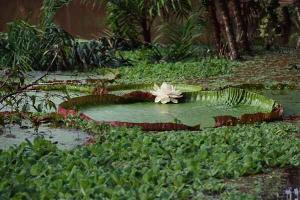 GIANT
WATER LILY GIANT
WATER LILY
Named in honor of Queen
Victoria of England in 1838, Victoria amazonica is the largest water lily in
the world. Its enormous, round, floating leaves can be seven feet wide and
the fragrant white flowers are up to one foot across heaving the size of a
soccer ball. The
flower turns purple after it is pollinated. The pollinators are
large scarab beetles.The stems, flower buds, and undersides of the leaves are covered with sharp
spines. Victoria grows in the warm waters of lakes and rivers throughout the
Amazon River basin of South America.
Travellers to the Amazon
observed that each huge flower opens for only two nights and that large
brown beetles are often inside. In the 1970's, a team of scientists from
Brazil and The New York Botanical Garden were the first to unravel the
complex relationship between the beetles and the flowers.
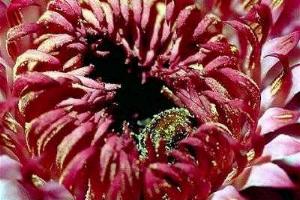 THE
BEATLE POLLINATOR THE
BEATLE POLLINATOR
On the first night, the
flower unfurls and scarab beetles are drawn to its butterscotch-and-pineapple scent and pure white
color. They are also drawn
to its warmth. The researchers found that the flower actually heats up. If
the air temperature is 80° F then the inside of the flower can be a
cozy 98° F. The beetles crawl inside to stay warm and eat special
supplies of sugar and starch. Later that night, the flower cools, closes,
and the beetles are trapped inside. As it closes, the flower changes color
from white, to pink, to purple. All
the next day the beetles stay inside, munching their special food.
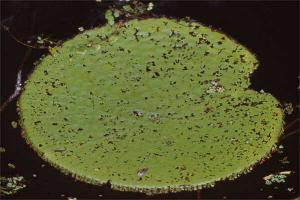 OLDER
LILY PAD OLDER
LILY PAD
In so-called black water lakes, with relatively clear
water, the giant lilies do grow not as big as
in white water lakes that carry more sediment, and hence nutrients for
growth. As the pad ages it is eaten by insects and other aquatic herbivores.
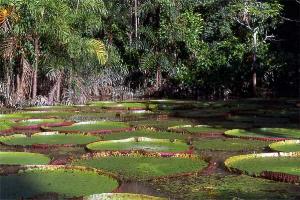 WATER
LILY HABITAT WATER
LILY HABITAT
Typical habitat of the
giant lily is a quiet backwater lake, undisturbed by currents. The lilies
are often found growing in swamps surrounded by impenetrable spiny palm
forest.
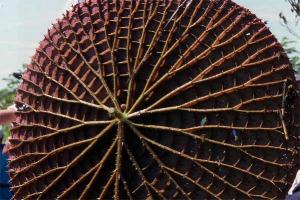 UNDERSIDE
OF WATER LILY UNDERSIDE
OF WATER LILY
The underside
of the giant water lily is covered with sharp, inch-long spines which
protect the pad from herbivorous fishes. The pattern of ribs helps support
the huge leaf.
|
